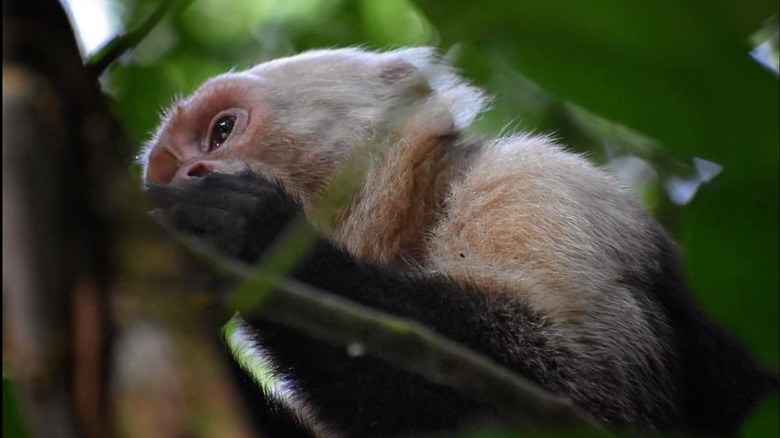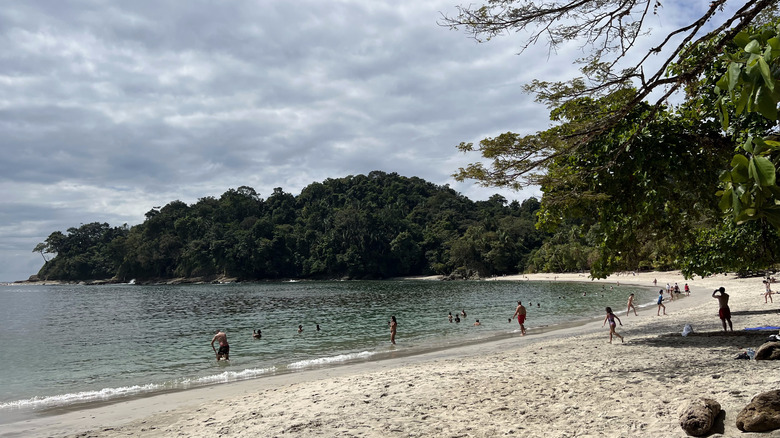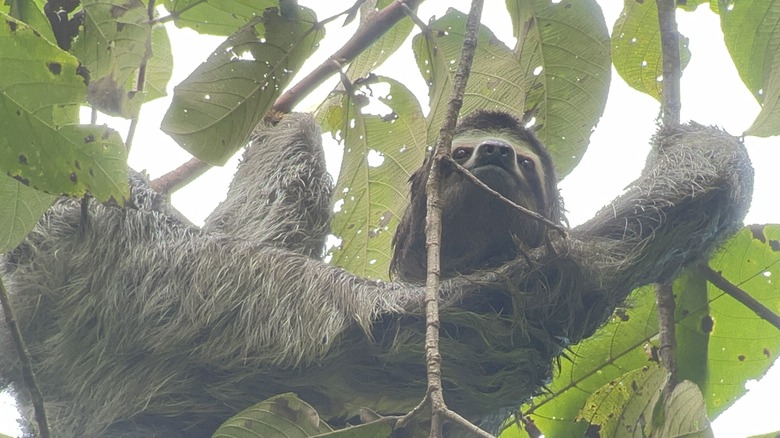This Small But Mighty Costa Rica National Park Is A Perfect Blend Of Beach And Rainforest
People travel to Costa Rica for all kinds of reasons. From the incredible food to unforgettable natural wonders, this Central American country is a marvel. And since more than half of the country is covered in lush forestry, you'll probably be spending time exploring the flora and fauna while you're there. One of the most popular places to do this is Manuel Antonio National Park, which is also an exceptional setting for a family vacation to Costa Rica.
Of the 29 national parks in Costa Rica, Manuel Antonio is the smallest. Even so, at 683 hectares or over 1687 acres, this park is far from tiny. You could easily spend hours here just wandering the walkways or lounging at the beach. That's right, Manuel Antonio has beach access, too. Not only that, there are actually two beaches in the park — Playa Espadilla Sur and Playa Manuel Antonio. You'll hardly believe you're still in the park unless you look around at the dense forest that planks the beachfront. The duality is unsurprising since this region is widely considered one of the best choices for a little bit of everything in Costa Rica.
But with so many other national parks, all of which are bigger than Manuel Antonio, what makes this itty bitty park so special? After all, it's not as if there is a shortage of beaches or rainforests to see in Costa Rica.
Manuel Antonio National Park has unparalleled biodiversity
Thanks in part to its astounding variety of ecosystems, from the coral reefs off the beaches to the rainforests, Manuel Antonio National Park is one of the most biodiverse places on Earth. If you go snorkeling, you can find all kinds of brightly colored tropical fish and other sea life, but if you look up into the trees, you'll see a whole different kind of biodiversity.
That's because Manuel Antonio is home to more than 100 species of mammals, 350 bird species, 346 plant species, and who knows how many types of insects. Everywhere you look here, you'll find something new to be in awe of. You may see some sneaky squirrel monkeys leaping from tree to tree or even a mama sloth carrying a baby — if you're lucky.
One of the amazing things about this park is that you may see the aforementioned Central American squirrel monkeys, which are an endangered species. When we went to Manuel Antonio, we saw quite a few of these little critters swinging around or watching us from trees. If you're hoping to spot one, you need to pay close attention (and probably bring binoculars) because these squirrel monkeys are anywhere from 8.8- to 11.6-inches big though their tails can add 14-18 inches to their tiny frames.
Hire a professional guide
When you go to Costa Rica, you probably want to see sloths. Not getting a chance to spot them is actually the biggest complaint many tourists have. If you visit Manuel Antonio National Park without a professional guide, there's a good chance you won't see one at all — or a lot of the wildlife, for that matter. Why? Well, the above photo was taken by placing our phone against a telescope. There's no way we would've spotted that sloth otherwise.
A guide is your best chance to get the most out of your visit to Manuel Antonio. Unfortunately, there are also a lot of fake guides out there (especially at the front gate) who will take your money and waste your time. Be sure you hire a guide before going to the park, check online reviews, or book a guided tour through the park itself.
It is incredible what a knowledgeable guide can show you while walking through the park. You could be exploring at a quick pace when all of a sudden the telescope is plopped down and your guide has spotted a thumb-sized insect in a nearby tree. How did they see that so easily? Experience. And it will be an experience you'll cherish forever.


